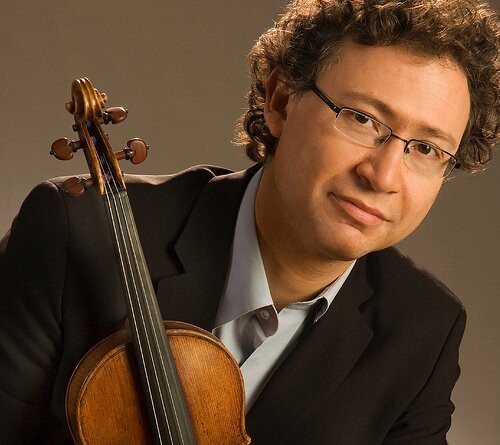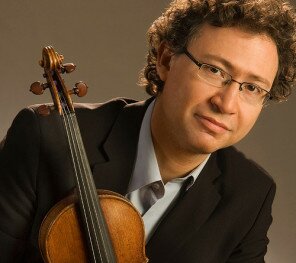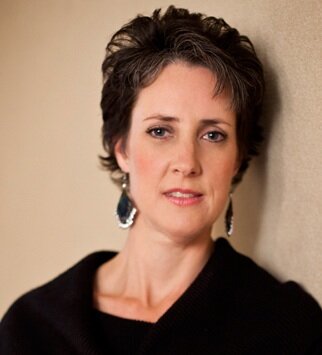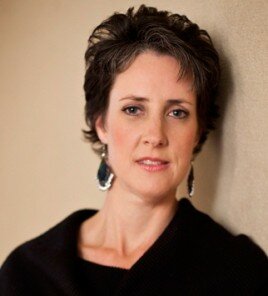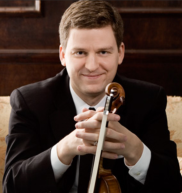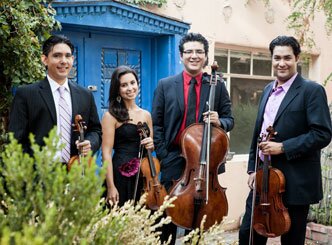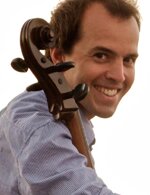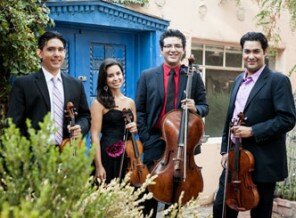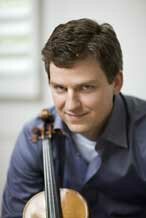
Starting a few days earlier than usual, the Seattle Chamber Music Society’s Summer Festival opened Saturday night at Nordstrom Recital Hall with some new faces and music. Under violinist James Ehnes, who succeeded Toby Saks as artistic director a year ago, the festival is branching out with more music for winds or brass. The opening night’s concert reflected this with works by Honegger and Enescu for trumpet and piano. (The next concerts are tonight and this Wednesday, July 3, beginning with recitals at 7 p.m., the concert at 8 p.m.)
Before these, however, came one of those moments which remind one of how sublime a chamber music performance can be in the right hands.
From the three trios of Beethoven’s Op. 1, his first published work, violinist Ida Levin, cellist David Requiro (a festival newcomer) and pianist Inon Barnatan performed No. 3. It was one of those magical times when the rapport between the players, their musicianship and sensitivity, their awareness of the environs in which they played all came together to create something rare and memorable. It engaged the listener from the first notes.
There was also the marvel of realizing what Beethoven achieved at the tender age of 21. This trio in C Minor is a turn in the path of classical music, a step towards the, as yet, unknown of classical ideals veering towards a more romantic style, a change from what Haydn and Mozart had been creating in their chamber music.
There is little that is truly uncomfortable in Haydn’s and Mozart’s chamber music. It’s exquisite, elegant, imaginative, profound at times, with depth, but rarely goes beyond what would then be considered decency in allowing emotions to show. Not so Beethoven, who uses sudden changes in mood, tensions versus calm, unmasked feeling and drama in his trio. It is also a wonderful vehicle for the pianist, who has the lion’s role.
Here, too, one can sense Beethoven’s fascination with discovering the limits of what could be done with what was still a very new instrument in 1791, an all-wooden piano with a light key action, quick sound decay and the ability to change dynamics. Today’s nine-foot concert grand piano is a very different animal, heavily braced with metal, with heavier key action and a long decay. Yes, there are differences in the stringed instruments, also, with their now usually metal strings and bracing inside the body to enable higher tension and louder sound, but nothing like so much as with a piano.
Beethoven has the pianist racing from end to end of the instrument with lightning fast runs and expressive dynamic changes, and it says volumes for Barnatan that he encompassed his busy role with lightness, ease, excellent articulation, and without ever drowning out the violin and cello.
Such was not the case in the earlier concert recital, in which pianist Andrew Armstrong and clarinetist Ricardo Morales performed Brahms’ Sonata in F Minor. Armstrong could play with expressive gentleness when called for, but often in louder passages he gave it such volume that the clarinet sound was mostly drowned.
He played the same way in Honegger’s Intrada (1947) for trumpet and piano, and in Enescu’s Legende (1906) for the same instruments, but here he was more than matched by the clarion sound of Jens Lindemann’s trumpet. An angular piece, the Honegger is often dissonant, a bit jazzy or jaunty, quite short, while the Enescu is more impressionistic, almost a lullaby at times. Both require a gifted trumpet player, which they had in Lindemann, a newcomer to the festival (as is Morales). Nevertheless, both works served to show that the trumpet can be too loud an instrument for a small concert hall.
The performance ended with Brahms’ familiar Quintet in B Minor for clarinet and strings. Here it was possible really to savor Morales’ butter-smooth, effortless, eloquent clarinet playing. He was joined by Ehnes and Stephen Rose, violins; Rebecca Albers,viola; and Brinton Smith cello; both these last two also newcomers, who from their prominent parts in the variations movement leave one eager to hear more of them.
The entire festival this year is dedicated to the memory of two women who did a great deal to further the aims of the Chamber Music Society, Helen Gurvich and Arlene Hinderlie Wade.
